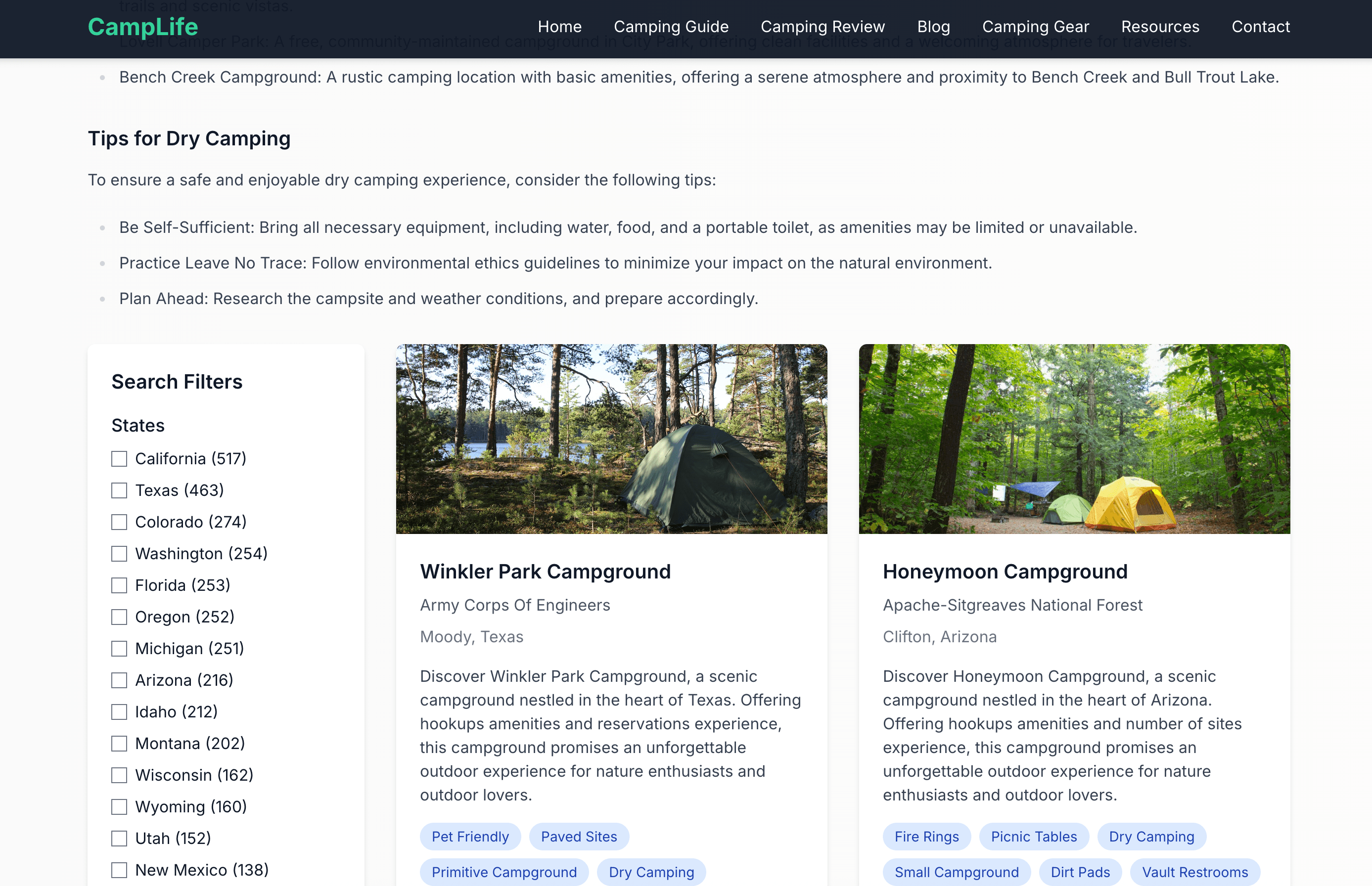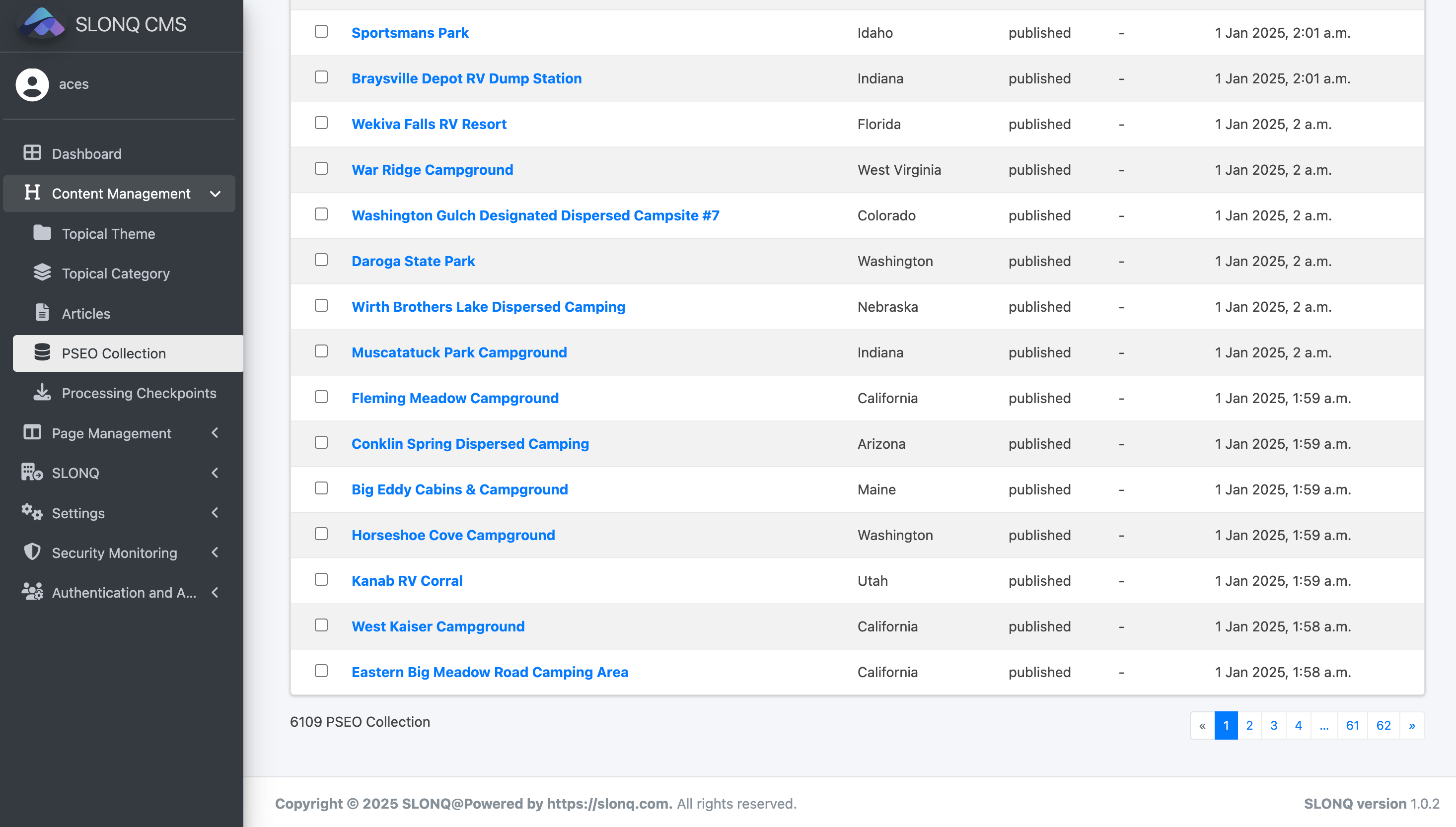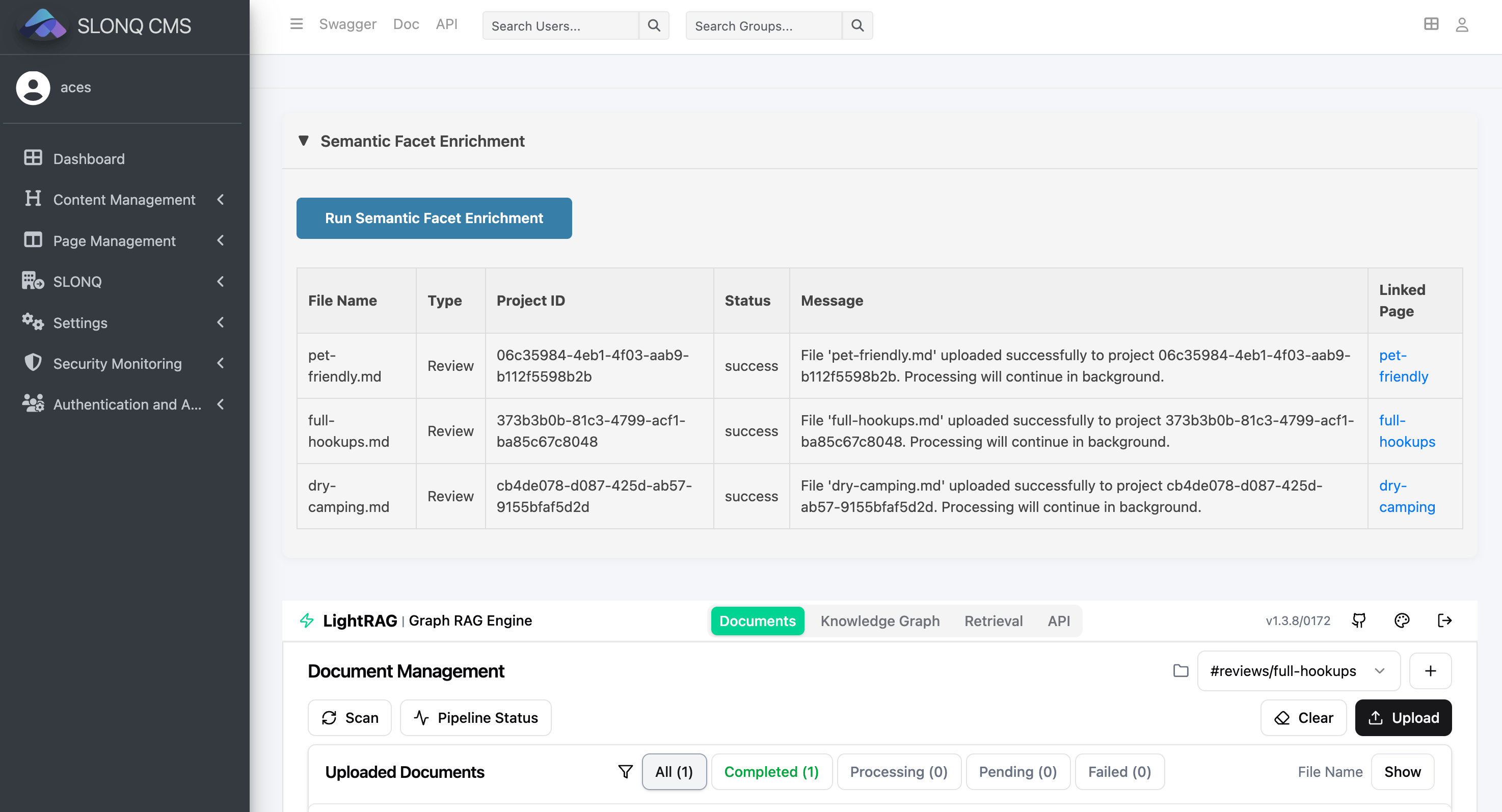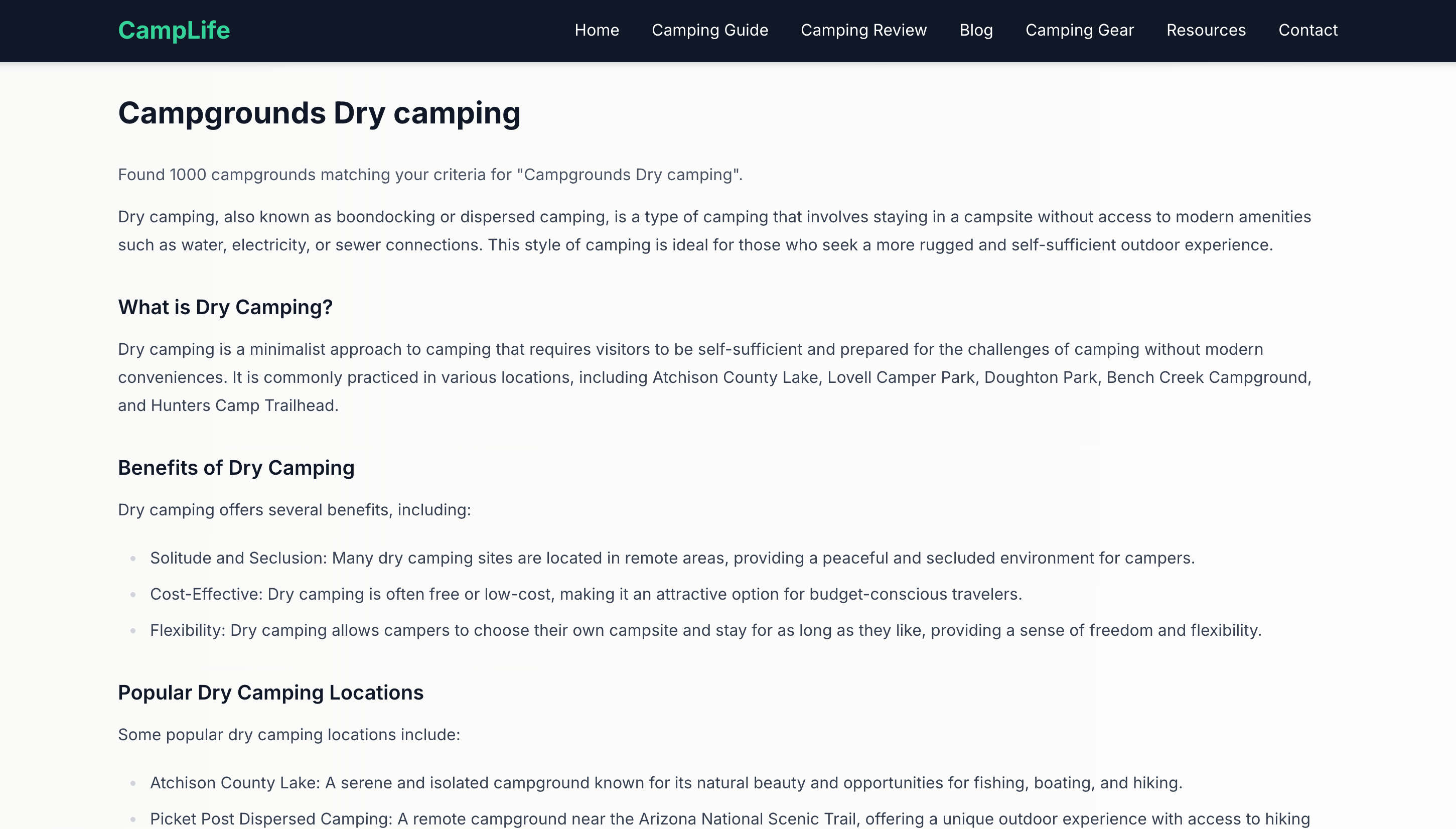
Semantic Facet Enrichment: The AI-Powered Revolution for E-commerce SEO and Topical Authority
In the complex world of e-commerce, faceted navigation is a powerful tool for users, allowing them to filter products with ease. However, for SEO professionals, it often presents a minefield of challenges: duplicate content nightmares, wasted crawl budget, and frustratingly poor rankings. Generic facet pages frequently offer little unique content, confusing search engines, diluting link equity, and preventing your site from establishing true authority on specific topics.
Enter "Semantic Facet Enrichment"—an AI-powered solution poised to transform these common SEO headaches into a significant competitive advantage. This innovative approach leverages advanced AI, including Large Language Models (LLMs) and knowledge graphs, to generate rich, unique content for high-value facet pages. By intelligently identifying key facets, embedding listing data into dynamic knowledge graphs, and using AI to create context-aware content, Semantic Facet Enrichment resolves canonicalization issues, enhances user experience, and significantly boosts your site's topical authority and search engine visibility.
Read on to discover how you can revolutionize your e-commerce SEO strategy and turn your website's filtered pages into powerful content hubs that drive rankings and establish your brand as an industry leader.


What is Semantic Facet Enrichment?
Imagine your e-commerce website's filtered pages, often seen as mere functional tools, suddenly coming alive with valuable, relevant content. Semantic Facet Enrichment is precisely that—think of it as hiring a professional content curator for each of your faceted navigation pages. Instead of generic listings, this AI in SEO innovation transforms these pages into rich, informative resources that are highly optimized for both users and search engines.
In simple terms, Semantic Facet Enrichment uses advanced Artificial Intelligence, including Large Language Models (LLMs) and sophisticated knowledge graphs, to understand the true intent behind combined filter selections (facets). It then intelligently generates unique, contextually relevant content for these specific facet pages. This process addresses common SEO pitfalls like duplicate content and thin content by injecting semantic depth, ensuring each filtered view offers distinct value. By creating this rich, semantically optimized content, it helps search engines better understand the topic authority of your pages, ultimately leading to improved rankings and a significantly enhanced user experience.


The SEO Nightmare of Faceted Navigation
While incredibly useful for users, faceted navigation can quickly become an SEO nightmare for e-commerce websites. The very mechanism that empowers user choice often creates significant hurdles for search engine visibility.
Duplicate and Thin Content
One of the most pervasive issues with faceted navigation is the proliferation of duplicate content and thin content. Consider an online clothing store: a search for "men's shirts" might lead to a page. Applying a filter for "blue" creates "men's blue shirts," and then "cotton" leads to "men's blue cotton shirts." While each of these pages refines the product list, the descriptive content surrounding them often remains minimal or identical. This results in countless URLs displaying largely the same product listings with only minor variations, leading to vast numbers of low-value pages that offer little unique information to search engines.
Wasted Crawl Budget
This explosion of similar, low-value pages directly impacts your crawl budget. Search engine crawlers have a finite amount of time and resources they allocate to crawling your website. When a significant portion of your site consists of unoptimized facet pages, these bots spend valuable time crawling and indexing content that provides little SEO value. This means that important, high-quality pages—such as product pages or blog posts—may be crawled less frequently, or even missed entirely, hindering their ability to rank. Effectively, your crawl budget is wasted on digital "dead ends" rather than being utilized for content that genuinely moves the needle.
Loss of Topical Authority
Perhaps most critically, unoptimized faceted navigation leads to a severe loss of topical authority. Generic filter pages, by their very nature, struggle to establish your website as an expert source for specific niches. For instance, a page generated by filtering "running shoes" by "size 10" and "brand X" often lacks the in-depth, authoritative content that signals expertise to search engines. Without unique descriptions, expert insights, or related content, these pages fail to build a strong semantic presence around the specific topics they represent. This absence of rich, specialized content prevents your site from gaining the trust and recognition from search engines that are essential for achieving high rankings and becoming a go-to resource in your industry.
How AI Comes to the Rescue
The challenges posed by faceted navigation are significant, but this is precisely where Artificial Intelligence, specifically Semantic Facet Enrichment, steps in as a powerful savior for your SEO strategy. By applying intelligent automation to content generation and site structure, AI can transform your filtered pages from liabilities into assets.

AI-Generated Unique Content
At the heart of Semantic Facet Enrichment is sophisticated AI for content creation. This process moves beyond mere listing aggregation by leveraging advanced Large Language Models (LLMs) in conjunction with dynamic knowledge graph technology. For a given filter combination, the AI doesn't just show products; it intelligently analyzes the underlying data of the relevant listings—for example, extracting key attributes and insights from a selection of the most pertinent products. It then uses this information to generate valuable, unique summaries and descriptive text. This process, often powered by frameworks like LightRAG, allows the system to create contextually rich content that resonates with user intent and provides search engines with meaningful information, effectively transforming thin, generic pages into authoritative resources.

Intelligent Canonicalization
One of AI's most critical roles in this solution is enabling intelligent canonicalization. Rather than indiscriminately allowing search engines to crawl and potentially index every single facet combination (which often leads to duplicate content penalties and wasted crawl budget), the AI system can automatically identify and prioritize high-value faceted pages. For instance, it might determine that only the top 500 most popular or strategically important faceted pages warrant unique content and indexing. Less valuable or very similar facet combinations can then be strategically managed using appropriate SEO directives like no-index or no-follow to prevent them from negatively impacting your site's SEO performance. This ensures search engines focus their valuable crawl budget on the pages that matter most, leading to better indexation and ranking for your priority content.
Boosting Topical Authority
By deploying unique, AI-generated content on carefully selected facet pages, Semantic Facet Enrichment dramatically improves your site's topical authority. When search engines encounter rich, semantically optimized content for specific, filtered categories—like "women's eco-friendly running shoes" or "gluten-free vegan protein powders"—they recognize your website as a specialized, authoritative source for those specific niches. This deep, granular content demonstrates expertise, signaling to search engines that your site is a comprehensive resource, thereby boosting your overall credibility and pushing your pages higher in search rankings.
A Complete Blueprint for Building Topical Authority
While Semantic Facet Enrichment is a revolutionary tool for optimizing your filtered pages, its true power is unlocked when integrated into a more comprehensive SEO strategy. To truly dominate your niche and establish unshakeable topical authority, you need a holistic approach that leverages both AI-driven content and strategic site architecture.
Topic Cluster Model
The Topic Cluster Model is a fundamental framework for how to build topical authority effectively. Instead of creating isolated blog posts or product pages, this model organizes your content around broad "pillar content" topics, which serve as comprehensive hubs. Surrounding these pillars are "cluster content" pieces—more specific articles, product categories, or in our case, even semantically enriched facet pages—that delve into sub-topics and link back to the central pillar. For example, a pillar page on "Sustainable Home Living" could have cluster content on "Eco-Friendly Cleaning Products," "Energy-Efficient Appliances," and "Recycled Furniture." By using AI-enriched facet pages as part of your cluster content, you can automatically generate specialized content for niche filters (e.g., "organic cotton bedsheets" or "recycled plastic outdoor furniture"), strengthening the overall semantic network around your pillar topics. This structured approach signals to search engines that your website is a deep, authoritative resource for a particular subject matter.
Internal Linking Strategy
A robust internal linking strategy is the circulatory system of your website's authority. It's crucial for both guiding search engine crawlers and distributing link equity throughout your site. By strategically linking from your pillar content to relevant cluster pages (including your newly enriched facet pages), and from these cluster pages back to the pillar, you create a powerful web of semantic relationships. This not only helps search engines understand the connections between your content pieces but also ensures that authority flows efficiently to your most important pages. Semantic Facet Enrichment enhances this by providing more unique and relevant anchor text opportunities on your facet pages, allowing for more precise internal links that reinforce your overall content cluster strategy and communicate deeper topical relevance to algorithms.
Conclusion
Semantic Facet Enrichment represents a paradigm shift in how e-commerce websites can approach SEO, particularly when confronted with the inherent complexities of faceted navigation. It fundamentally transforms what was once an SEO hindrance—the proliferation of thin and duplicate filter pages—into a powerful engine for growth and topical authority. By leveraging advanced AI to generate unique, semantically rich content for high-value facet combinations, it directly addresses the notorious challenges of duplicate content, optimizes crawl budget utilization, and cultivates deep, demonstrable expertise in the eyes of search engines.
This AI-powered revolution isn't just about fixing problems; it's about unlocking new opportunities. By integrating Semantic Facet Enrichment into a holistic SEO blueprint that includes robust content cluster models and strategic internal linking, businesses can build an unassailable online presence. It allows you to transform every relevant user query into an authoritative landing page, driving organic traffic and establishing your brand as the definitive resource in your niche.
Ready to harness the power of AI to revolutionize your e-commerce SEO and build unparalleled topical authority? Don't let your faceted navigation hold you back any longer. Learn more about how Semantic Facet Enrichment can be custom-tailored for your website and propel your rankings to new heights.
Discover the Future of E-commerce SEO with Semantic Facet Enrichment
FAQs About Semantic Facet Enrichment and E-commerce SEO
1. What is faceted navigation in e-commerce?
Faceted navigation is a system that allows users to filter products by multiple attributes, such as size, color, brand, or material, making it easier to find specific items in large catalogs.
2. Why does faceted navigation create SEO challenges?
Faceted navigation often leads to the generation of numerous pages with similar or duplicate content. These pages can dilute your website’s topical authority, waste crawl budget, and confuse search engines, ultimately resulting in poor rankings.
3. What is Semantic Facet Enrichment?
Semantic Facet Enrichment is an AI-driven approach that uses advanced Artificial Intelligence, including Large Language Models (LLMs) and knowledge graphs, to generate unique, contextually relevant, and rich content for faceted navigation pages. This transforms generic filtered pages into valuable resources for both users and search engines.
4. How does Semantic Facet Enrichment solve duplicate and thin content issues?
By understanding the intent behind each filter combination, Semantic Facet Enrichment creates unique summaries and descriptive text for each page, ensuring that each filtered view offers distinct value and reduces the risk of duplicate or thin content.
5. How can AI help manage crawl budget with faceted navigation?
AI-powered Semantic Facet Enrichment can intelligently identify which facet pages are most valuable and should be indexed. Less important or very similar pages can be marked with SEO directives like no-index or no-follow, ensuring search engines focus their crawl budget on the content that matters most.
6. What is canonicalization, and how does AI assist with it?
Canonicalization is the process of indicating to search engines which version of a page should be treated as the main or authoritative one. AI can automate this process by identifying and prioritizing the most important facet pages, helping to avoid duplicate content penalties.
7. How does Semantic Facet Enrichment boost topical authority?
By generating rich, unique content for specific and strategically important facet pages, your website signals expertise in those niches to search engines, building trust, topical authority, and improving rankings.
8. What is the Topic Cluster Model, and how does it relate to Semantic Facet Enrichment?
The Topic Cluster Model organizes content around comprehensive pillar pages and related cluster content (including semantically enriched facet pages). This structure helps establish your site as a deep, authoritative resource by interlinking related content and strengthening semantic relevance.
9. Why is internal linking important for e-commerce SEO?
Internal linking helps search engines discover and understand the relationships between your content. By linking pillar pages to cluster pages (including enriched facet pages) and vice versa, you distribute link equity and reinforce your site’s topical relevance.
10. Can Semantic Facet Enrichment be part of a broader SEO strategy?
Absolutely. While powerful on its own, Semantic Facet Enrichment is most effective when integrated into a holistic SEO strategy that includes topic clusters, robust internal linking, and a focus on building topical authority across your e-commerce site.